Bugs are about it for the last few walks. I did see a Raccoon in the woods this morning (6/24/23) although it was too deep in the brush for a good photograph. On a sad note, the Cat Bird nest was found by some predator. Nests 3 feet off the ground are just not a good idea.
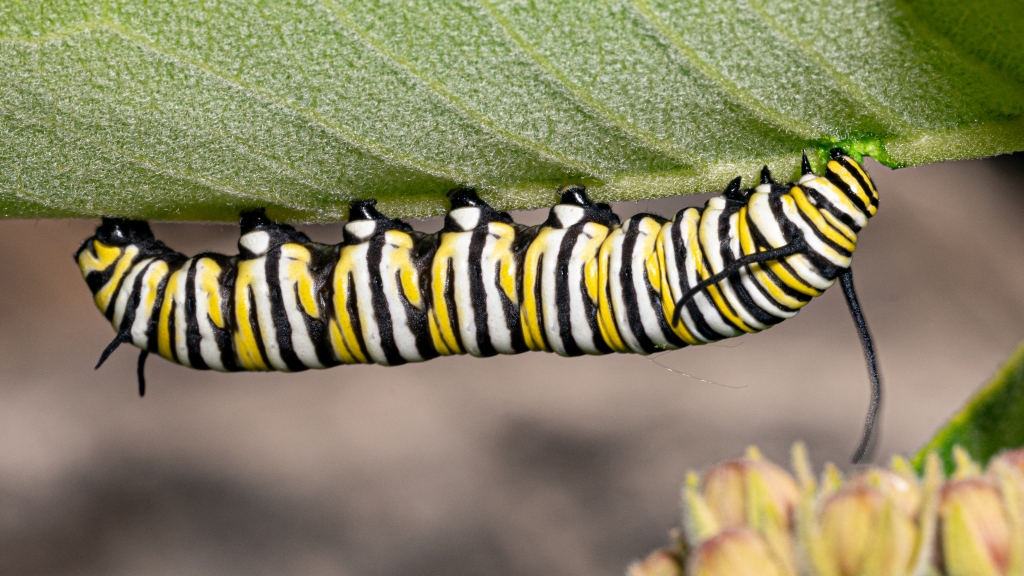
This is a Monarch Caterpillar munching on the bottom of a Milkweed leaf.
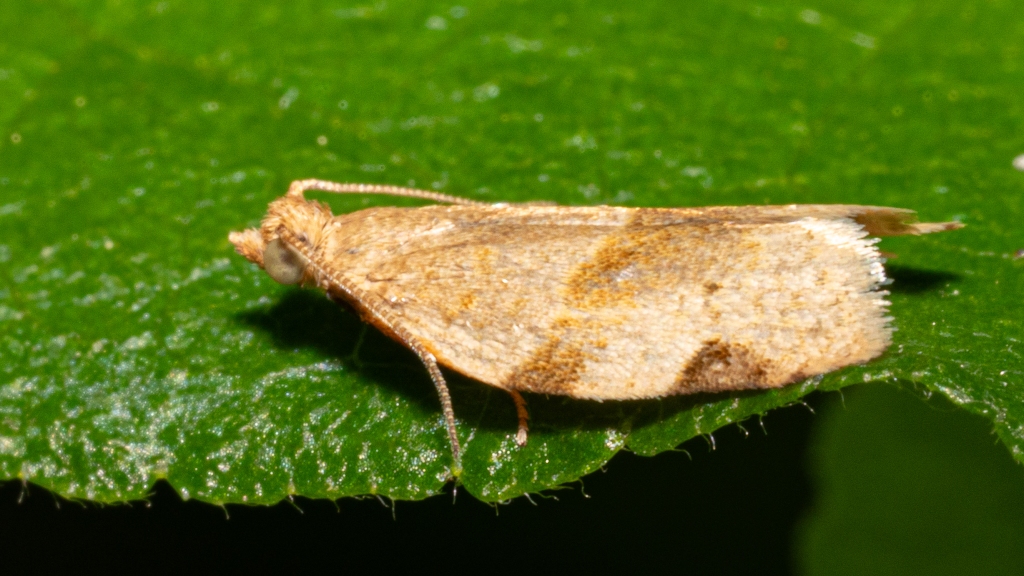
Maybe a Clepsis peritana, the garden tortrix or strawberry garden tortrix. Looks similar to their picture and they have a 10-15 mm wingspan which about the size of this one.
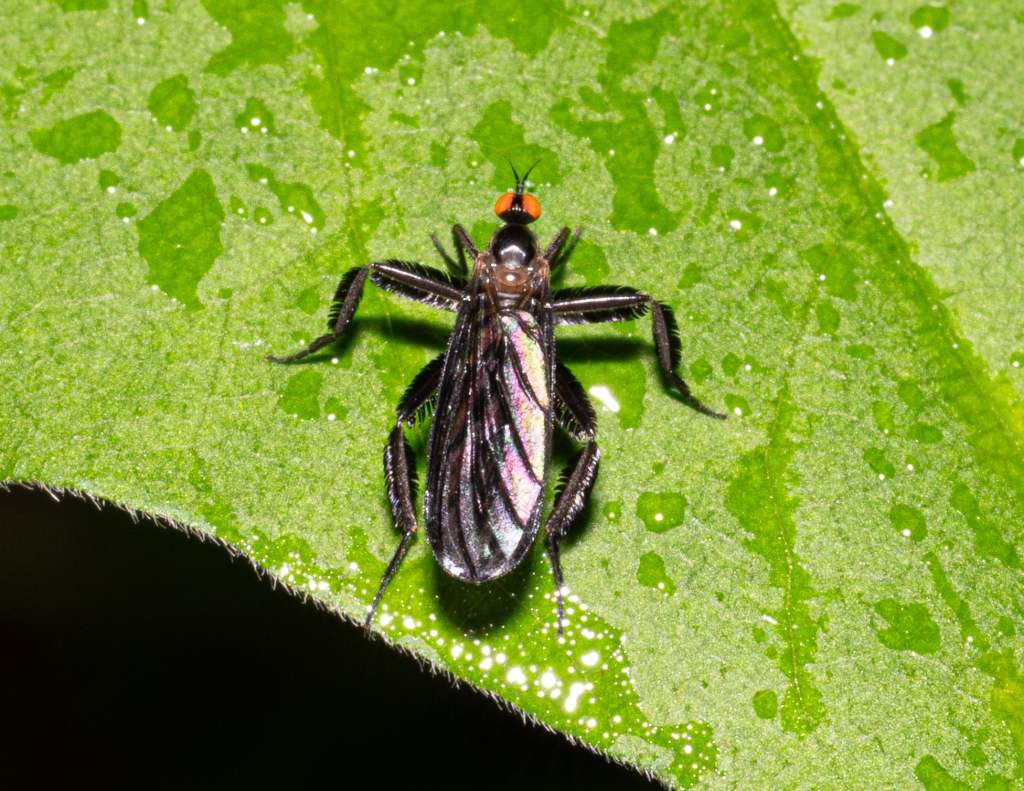
A female Long-tailed dance fly (Rhamphomyia longicauda). A commonly seen bug in the woods. Last year I first saw one on June 11. From (http://blog.minnesotaseasons.com/?p=1115): Every evening around sunset, males and females collect in same-sex swarms. Females fly up and down, the behavior that gives this family its common name “dance-flies”. Females cannot hunt for prey. They receive protein from males as gifts in exchange for copulation. They swallow air, filling and extending their abdomen outward, saucer-like, falsely signaling males that their eggs are nearing maturity. The long hairy legs wrap around the abdomen, making it appear even larger. Males are attracted to females that have largest swollen abdomens and hairiest legs. An individual will break off and join the other swarm to select a mate.
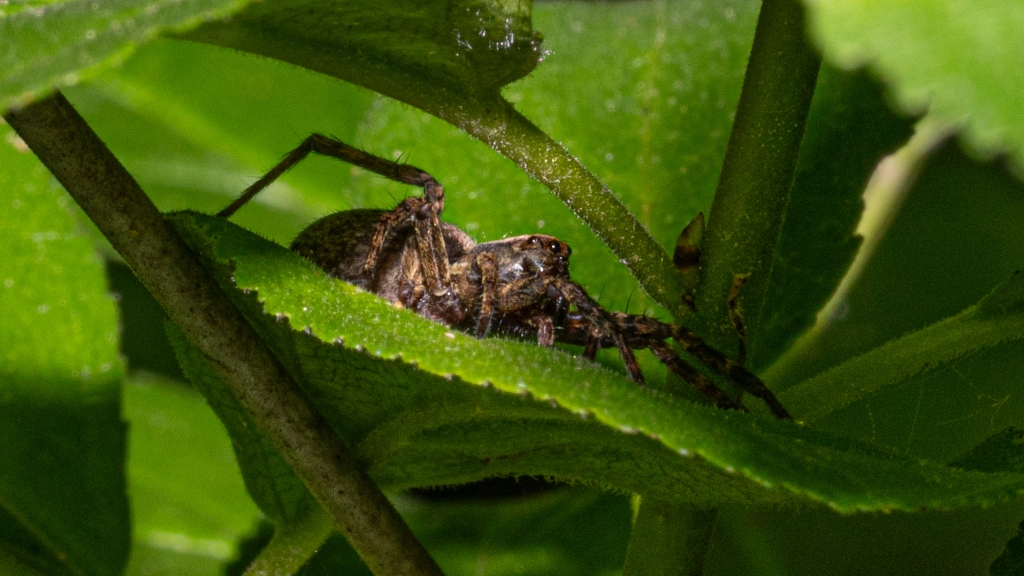
This isn’t a jumping spider although the large eyes make it look similar. It was about 3/4 of an inch long.
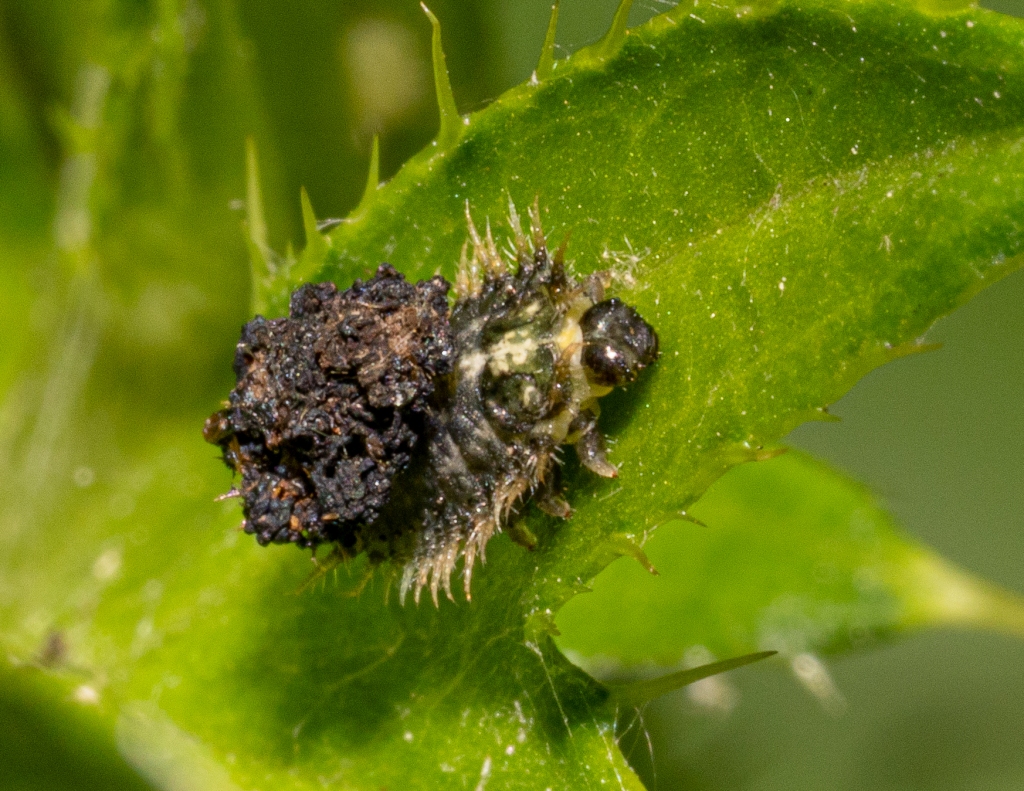
This is the larva of a Thistle Tortorise Beetle. These are, as the name implies, found on thistles. I’ve only seen a few so far this year. A couple of years ago there were many on most thistles below the Nature Center Building. From (https://uwm.edu/field-station/tortoise-beetle/):
‘About the larva’s odd-looking rear appendage … The whole shebang is called a fecal shield, and it’s made up of the larva’s own shed skins and, yes, fecal material (frass). When a TB larva molts (and it only molts 3 times prior to pupating instead of the more common five or six times), its old cuticle becomes part of the debris accumulating on its “anal fork”—the longer spines at the end of the abdomen. It retains the shield through the molting process instead of having to “start fresh.”
It’s a movable defense system. As Eisner points out in Secret Weapons, many animals consider feces to be “hazardous wastes” that may carry germs or parasites, and in addition, the shields of some species of TBs contain chemical repellants that the larva gets from its host plant. The larva can angle its shield toward its predator or shelter its whole body like an umbrella in order to block an attack.’
The adult is greenish and almost circular.
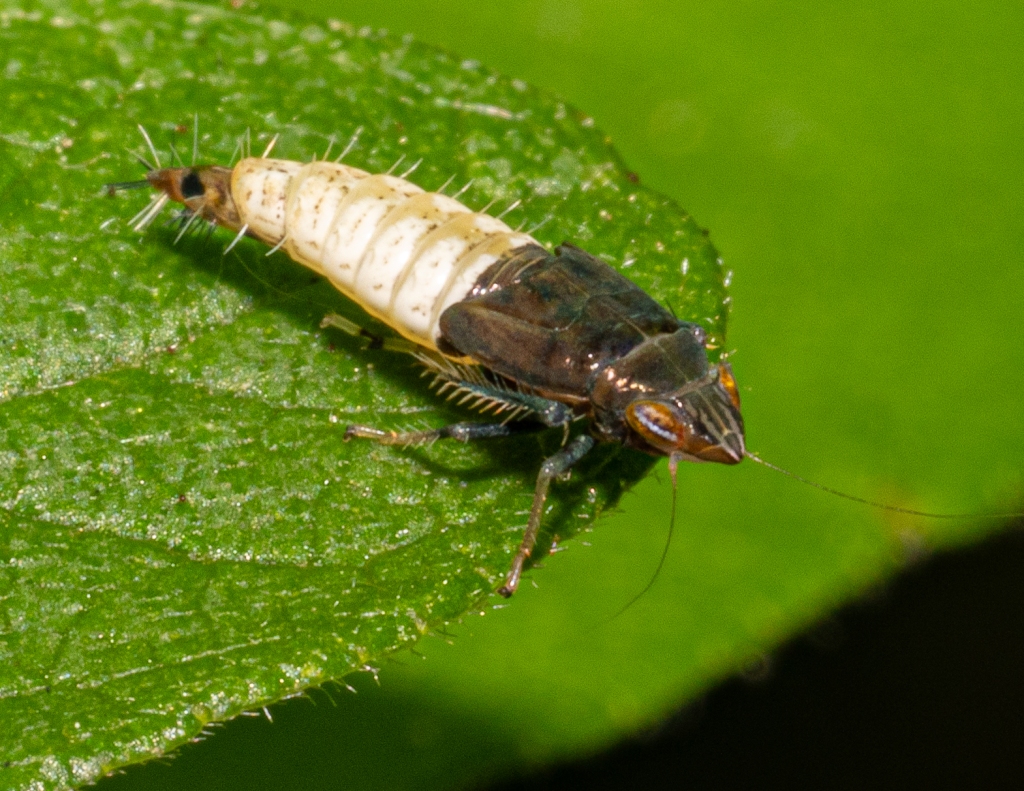
The nymph of something; maybe a leaf hopper.
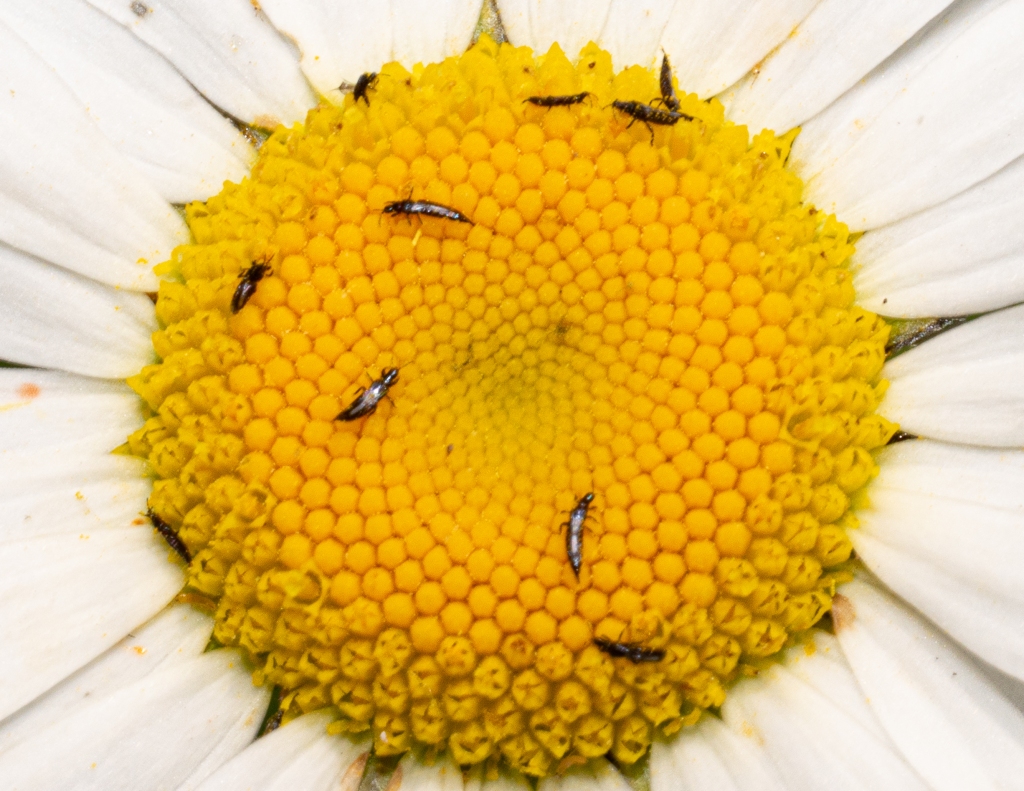
Tiny beetles on a daisy.
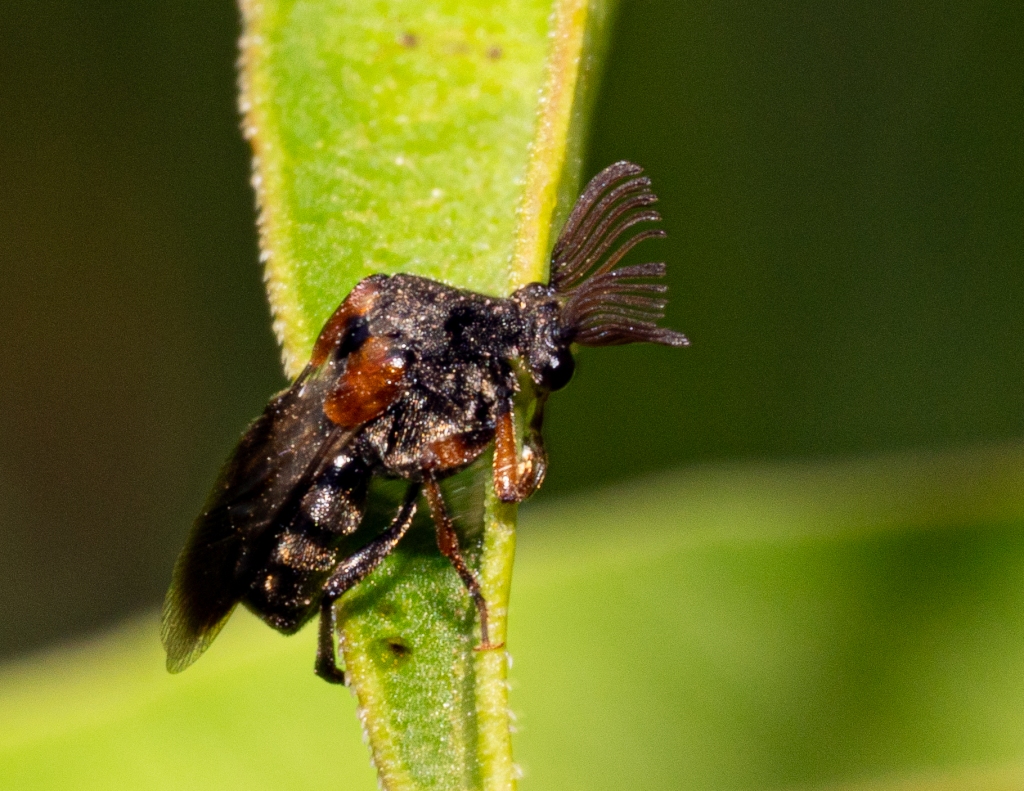
Really interesting antenna. Seek only identifies it as an insect.
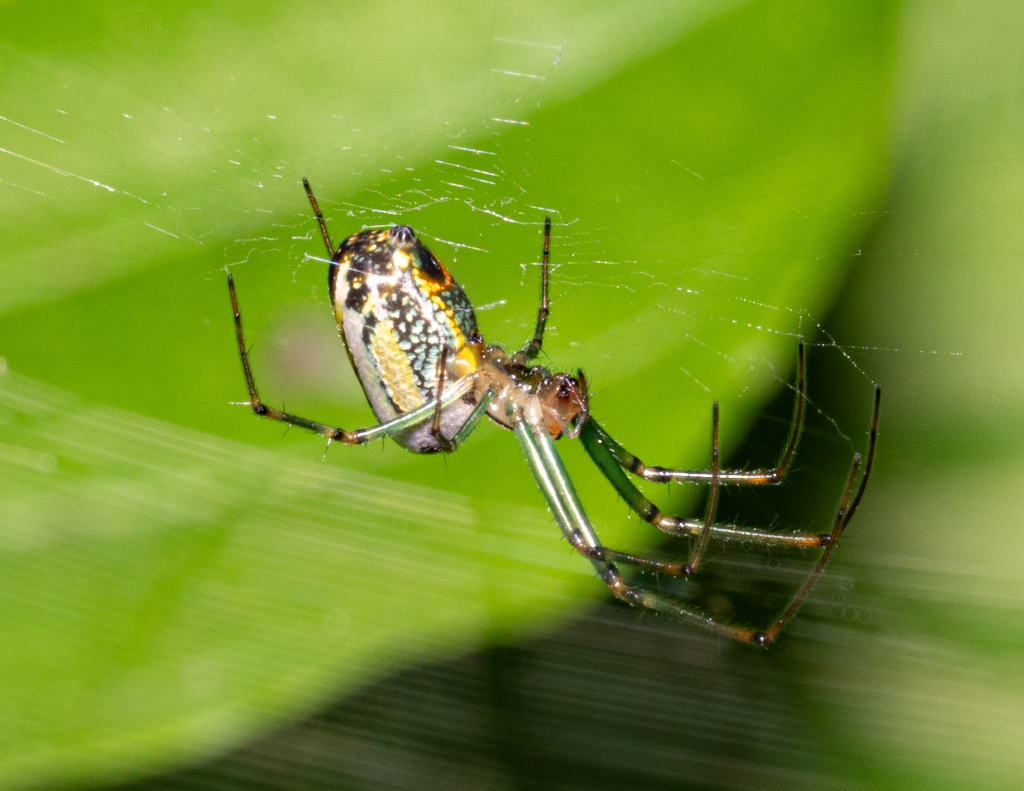
This is an orchard orbweaver. The body is about 3/8’s of inch long.
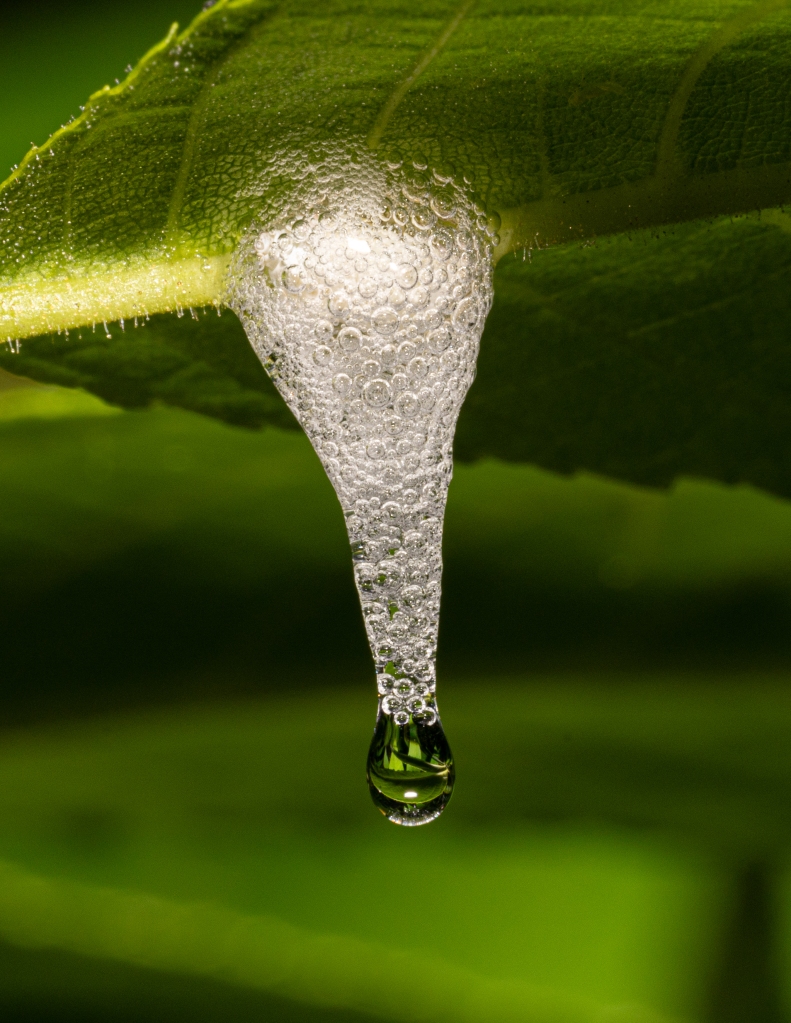
Just peculiar. It may be eggs of something. It was hanging on the bottom of a leaf and about 3/4’s of an inch long.
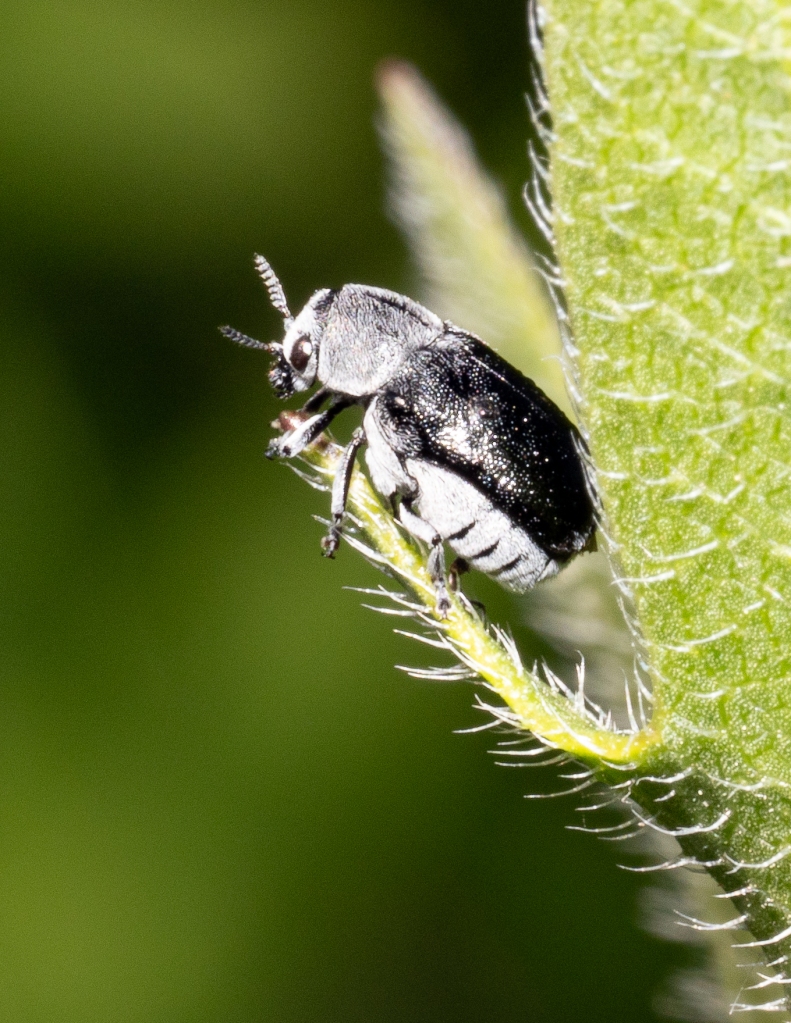
A gray beetle.
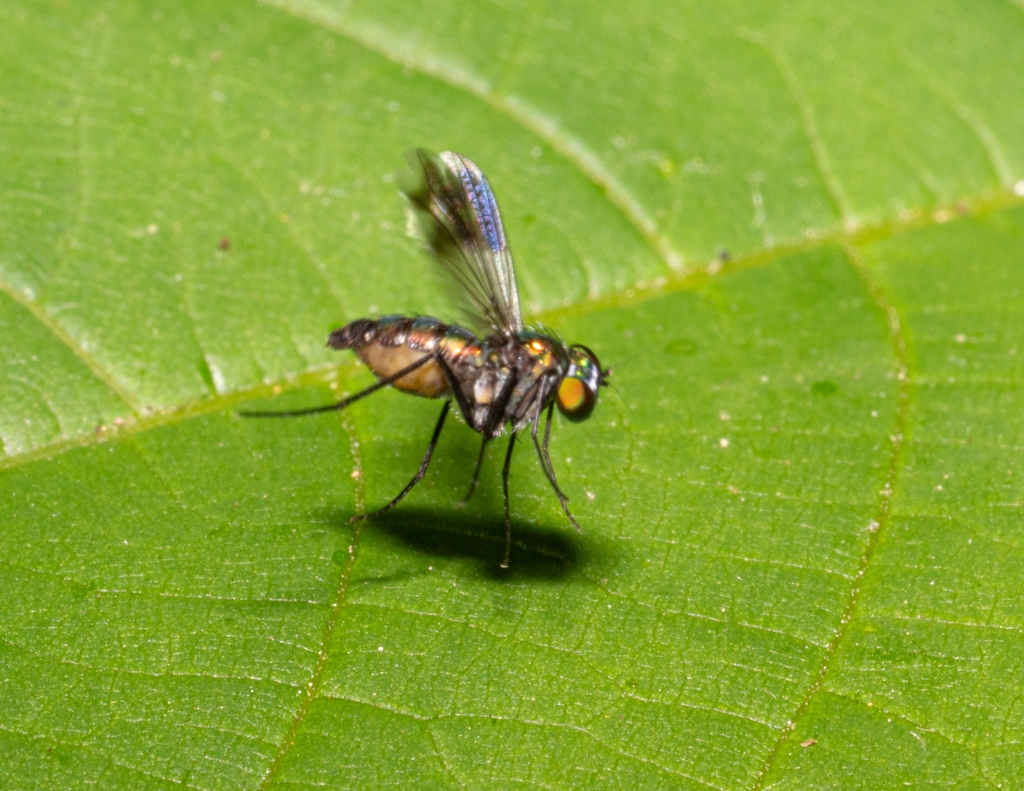
A Condylostylus patibulatus; the name is a lot bigger than these little iridescent flies. They are hard to take a photograph of as they’re one of the few insects that react to the flash. Generally, by the time the shutter grabs the image, they’ve leaped into the air.
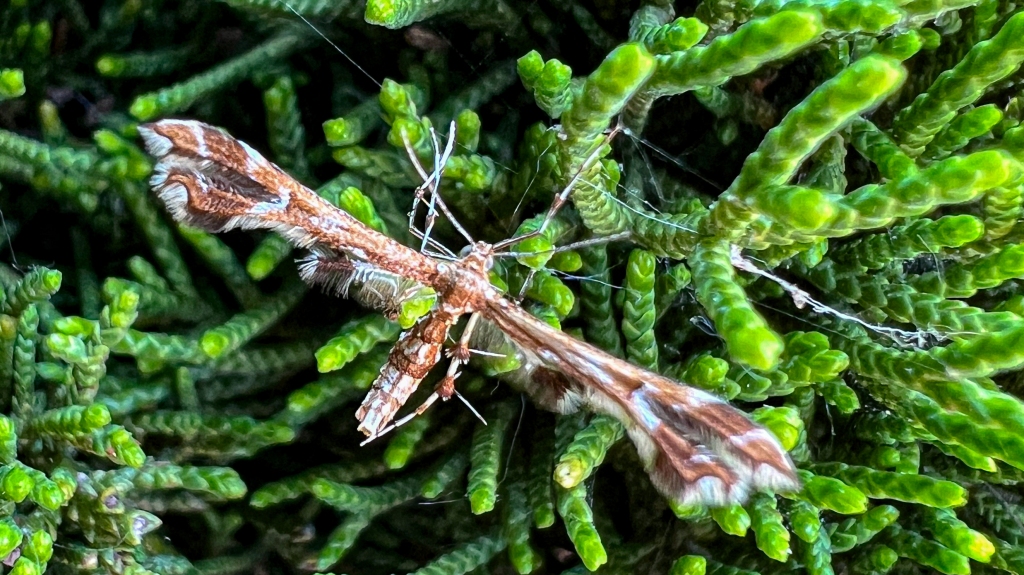
A Plume Moth. This was in a pine bush near the shore of Lake Michigan in Muskegon, MI. I’ve seen them in the Nature Center several times but did not see any last year.
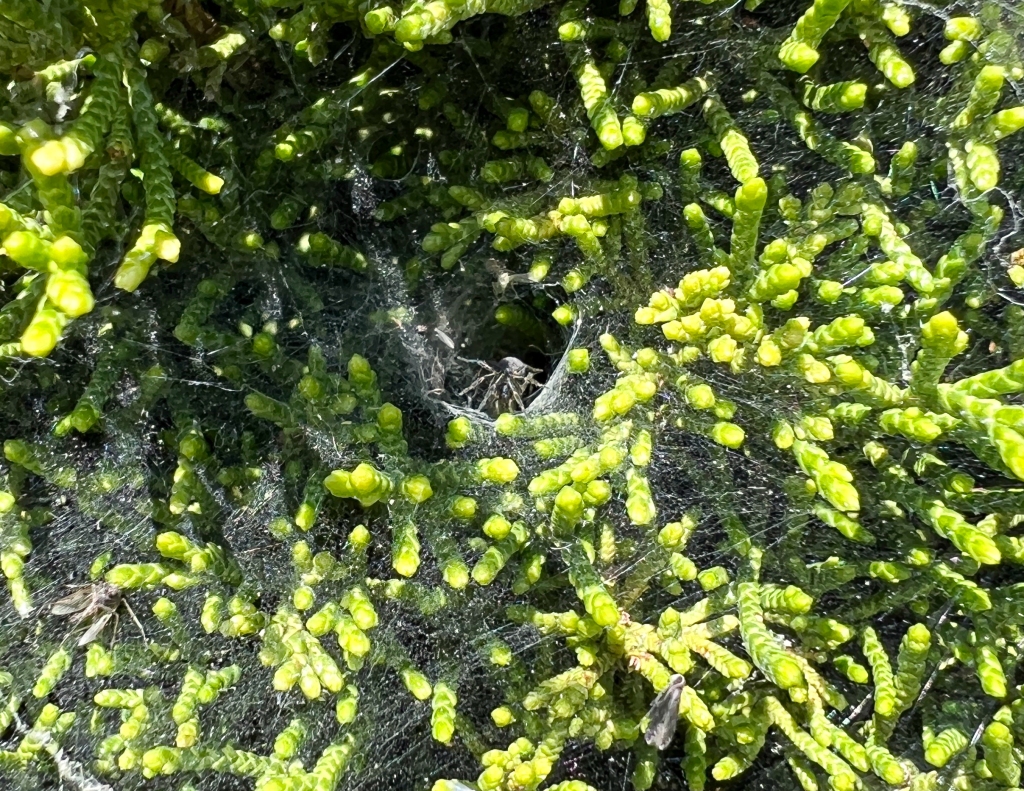
On the same bushes as the Plume Moth where probably hundreds of small (2-3 inches across) funnel webs. This is one of the few with a spider visible. Note the little captured bugs.